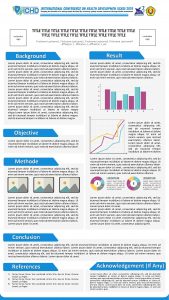S MAHESWARI GUEST LECTURER IN GEOGRAPHY GCWAK TITLE




















- Slides: 20

S. MAHESWARI GUEST LECTURER IN GEOGRAPHY GCW(A)K TITLE : AGRICULTURE IN INDIA 26. 08. 2020 III B. Sc. GEOGRAPHY OF INDIA

AGRICULTURE IN INDIA INTRODUCTION: India has been an agricultural country since millennia. Indian economy is largely based on agriculture. Indian society also is pre-dominantly an agrarian society wherein nearly 70% of the country’s population depends on agriculture for its sustenance. Although the share of agriculture in Gross Domestic Product has declined from 60% in 1951 to 15. 7% in 2008 -09, it still forms the backbone on Indian economy. Besides meeting the food requirements of the country, agriculture provides the raw materials to agro-based industries, accounts for the largest chunk of employment (52%) the labour force and earns substantial amount of valuable foreign exchange from exports.

Agriculture involves not only crops raising, but also animal husbandry, forestry, pisiculture, sericulture, etc. , which are directly attached to soil and water. The topographical and climatic conditions have favoured the country to utilize more than 50% of its area for agricultural purposes against the world average of 11 percent, and produce infinite variety of agriculture products ; besides there is vast potential of aquaculture exploiting her vast inland water resources as well as marine fisheries in the exclusive economic zone, and horticulture – silviculture in the favourable hilly areas. Agriculture creates demand for several impliments and machinery like threshers, tractors, pumping sets, etc. , and chemical fertilizers and pesticides etc. Thereby supporting many engineering and chemical industries.

The prosperity of the industrial sector thus largely depends on the productivity in agriculture. Many agricultural products like tea, coffee, spices, tobacco, fruits, vegetables, leather and leather products find place in international markets and earn valuable foreign exchange.

DISTRIBUTION OF INDIAN AGRICULTURE India ranks first in the world with highest net cropped area followed by US and China. The economic contribution of agriculture to India's GDP is steadily declining with the country's broad-based economic growth. The history of Agriculture in India dates back to Indus Valley Civilization. India ranks second worldwide in farm outputs. As per 2018, agriculture employed more than 50℅ of the Indian work force and contributed 17– 18% to country's GDP. According to latest report, agriculture is primary source of livelihood for 58% population in India.

In 2016, agriculture and allied sectors like animal husbandry, forestry and fisheries accounted for 15. 4% of the GDP (gross domestic product) with about 31% of the workforce in 2014. India ranks first in the world with highest net cropped area followed by US and China. The economic contribution of agriculture to India's GDP is steadily declining with the country's broad-based economic growth. Still, agriculture is demographically the broadest economic sector and plays a significant role in the overall socio-economic fabric of India exported $38 billion worth of agricultural products in 2013, making it the seventh largest agricultural exporter worldwide and the sixth largest net exporter. Most of its agriculture exports serve developing and least developed nations. Indian agricultural/horticultural and processed foods are exported to more than 120 countries, primarily to the Japan, Southeast Asia, SAARC countries, the European Union and the United States.

CHARACTERISTICS OF INDIAN AGRICULTURE Agriculture plays a pivotal role in dominating the economic, social and cultural life of the people in India. Some of the major characteristics of Indian agriculture are given below : Indian agriculture is, by and large, subsistence type. Farmers select crops to suit their domestic needs rather than generating surplus for sale or export. There is heavy pressure of population on land, as nearly 70% of the country’s population depends on agriculture for their livelihood. There is predominance of food crops in agriculture, which occupy 76% of the total cropped area and account for 80% of the total agricultural production of the country. Mixed cropping is usually practised in the same field to ensure some production during unfavorable weather conditions.

India has the highest percentage of geographical area (53%) under cultivation, as against USA (16. 3%), Japan (14. 9%), China (11. 8%), Canada (4. 3%) etc. Due to various socio-economic factors, the land holdings are small, fragmented and unfit for modern techniques of agriculture. Farming is intensively practised on traditional lines, utilizing draught animals and manual labour in agricultural work. Agriculture in india is labour-oriented wherein most of the agricultural operations are carried by hands. The use of farm machinery and improved implements is limited, and confined to rich farmers. Indian agriculture is mostly dependent on rainfall which is highly variable in time and space. Only 41. 2% of the total cropped area is under irrigation.

Lack of good pastures and low attention on raising fodder crops have adverse effect on the development of dairy farming. Indian agriculture lacks definite agricultural land use policy at national level. Lack of marketing and storage facilities and the dominant role of brokers and middlemen deprive farmers to fetch remunerative prices for their products. Indian agriculture has been neglected and given a step motherly treatment by the government. It still suffers from lack of infrastructure and is less remunerative. This has led to frustration and disappointment among farmers. There is mass exodus of people from rural to urban areas in search of jobs.

PROBLEMS OF INDIAN AGRICULTURE Indian agriculture is backward and traditional. It surfers from low productivity which is mainly caused by poverty of the farmers. Capital investment in agriculture is low, and pace of modernization very slow. The following problems have related the development of agriculture in the country : Inequality in land distribution, Land tenure system, Sub-division and fragmentation of holdings, Cropping pattern, Instability and fluctuations, Comditions of agricultural labourers, Poor farming techniques and agricultural practices, Inadequate use of inputs, Inadequate irrigation facilities, Absence of crop rotation, Lack of organized agricultural marketing, Instability in agricultural prices and Agricultural indebtedness.

Inequality in Land Distribution: The distribution of agricultural land in India has not been fairly distributed. Rathere is a considerable degree of concentration of land holding among the rich landlords, farmers and money lenders throughout the country. But the vast majority of small farmers own a very small and uneconomic size of holdings, resulting to higher cost per units. Moreover, a huge number of landless cultivators has been cultivating on the land owned by the absentee landlords, leading to lack of incentives on the part of these cultivators. Land Tenure System: The land tenure system practiced in India is suffering from lot of defects. Insecurity of tenancy was a big problem for the tenants, particularly during the pre- independence period. Although the land tenure system has been improving during the post-independence period after the introduction of various land reforms measures but the problem of insecurity of tenancy and eviction still prevails to some extent due to the presence of absentee landlords and benami transfer of land in various

Sub-division and Fragmentation of holdings: In India, the average size of holding is expected to decline from 1. 5 hectares in 1990 -91 to 1. 3 hectares in 2000 -01. Thus the size of agricultural holding is quite uneconomic, small and fragmented. There is continuous sub-division and fragmentation of agricultural land due to increasing pressure of population and breakdown of the joint family system and also due to forced selling of land for meeting debt repayment obligations. Thus the size of operational holdings has been declining year by year leading to increase in the number of marginal and small holdings and fall in the number of medium and large holdings. Cropping Pattern: The cropping pattern which shows the proportion of the area under different crops at a definite point of time is an important indicator of development and diversification of the sector. Food crops and non-food or cash crops arc the two types of crops produced by the agricultural sector of the country.

Instability and Fluctuations: Indian agriculture is continuously subjected to instability arising out of fluctuations in weather and gamble of monsoon. As a result, the production of food-grains and other crops fluctuates widely leading to continuous fluctuation of prices of agricultural crops. This has created the element of instability in the agricultural operation of the country. As the prices of the cash crops are becoming more and more attractive therefore, more and more land have been diverted from the production of food crops into cash or commercial crops. This has been creating the problem of food crisis in the country. Thus after 50 years planning the country has failed to evolve a balanced cropping pattern leading to faulty agricultural planning and its poor implementation.

Conditions of Agricultural Labourers: Agricultural labourers are the most exploited unorganized class in the rural population of the country. From the very beginning landlords and Zamindars exploited these labourers for their benefit and converted some of them as slaves or bonded labourers and forced to continue the system generation after generation. All these led to wretched condition and total deprivation of the rural masses. After 70 years of independence, the situation has improved marginally. But as they remain unorganized, thus economic exploitation of these workers continues. The level of income, the standard of living and the rate of wages remained abnormally low. Total number of agricultural workers has increased from 55. 4 million in 1981 to 74. 6 million in 1991 which constituted nearly 23. 5 per cent of the total working population of the country. This increasing number has been creating the problem of surplus labour or disguised unemployment, which in turn is pushing (heir wage rates below the subsistence level.

Poor Farming Techniques and Agricultural Practices The farmers in India have been adopting orthodox and inefficient method and technique of cultivation. It is only in recent years that the Indian farmers have started to adopt improved implements like steel ploughs, seed drills, barrows, hoes etc. to a limited extent only. Most of the farmers were relying on centuries old. Wooden plough and other implements. Such adoption of traditional methods is responsible for low agricultural productivity in the country. Inadequate Use of Inputs: Indian agriculture is suffering from inadequate use of inputs like fertilizers and HYV seeds. Indian farmers are not applying sufficient quantity of fertilizers on their lands and even the application of farm yard dung manure is also inadequate. Indian farmers are still applying seeds of indifferent quality. They have no sufficient financial ability to purchase good quality high yielding seeds. Moreover, the supply of HYV seeds is also minimum in the country.

Inadequate Irrigation Facilities: Indian agriculture is still suffering from lack of assumed and controlled water supply through artificial irrigation facilities. Thus the Indian farmers have to depend much upon rainfall which is neither regular nor even. Whatever irrigation potential that has been developed in our country, a very limited number of our farmers can avail the facilities. In spite of vigorous programme of major and minor irrigation projects undertaken since 1951, the proportion of irrigated land to total cropped area now comes to about 53 per cent in 199899. Therefore, in the absence of assured and controlled water supply, the agricultural productivity in India is bound to be low.

Absence of Crop Rotation: Proper rotation of crops is very much essential for successful agricultural operations as it helps to regain the fertility of the soil. Continuous production of cereals on the same plot of land reduces the fertility of the soil which may be restored if other crops like pulses, vegetables etc. are grown there. As the farmers are mostly illiterate, they are not very much conscious about the benefit of crop rotation. Therefore, land loses its fertility to a considerable extent. Lack of Organized Agricultural Marketing: Indian farmers are facing the problem of low income from their marketable surplus crops in the absence of proper organized markets and adequate transportation facilities. Scattered and sub-divided holdings are also creating serious problem for marketing their products. Agricultural marketing in India is also facing the problem of marketing farmers’ produce in the absence of adequate transportation and communication facilities, Therefore, they fell into the clutches of middlemen for the speedy disposal of their crops at an uneconomic and cheaper price.

Instability in Agricultural Prices: Fluctuation in the prices of agricultural products poses a big threat to Indian agriculture. For the interest of the farmers, the Government should announce the policy of agricultural price support so as to contain a reasonable income from agricultural practices along with providing incentives for its expansion. Stabilization of prices is not only important for the growers but also for the consumers, exporters, agro-based industries etc. In India, the movements of prices of agricultural products are neither smooth nor uniform, leading a fluctuating trend. In the absence of proper price support and marketing support, prices of agricultural products has to go down beyond the reasonable limit so as to create a havoc on the financial conditions of the farmers. Again the exorbitant prices charged by the middlemen on agricultural crops also pose a serious threat to the consumers. Thus price, fluctuation may lead to disaster as both falling and rising prices of agricultural crops are having its harmful impact on the society as well as on the economy of the country.

Agricultural Indebtedness: One of the greatest problems of Indian agriculture is its growing indebtedness. The rural people are borrowing a heavy amount of loan regularly for meeting their requirements needed for production, consumption and also for meeting their social commitments. Thus the debt passes from generation to generation. Indian farmers fall into the debt trap as a result of crop failure, poor income arising out of low prices of crops, exorbitantly high rate of interest charged by the moneylenders, manipulation and use of loan accounts by the moneylenders and use of loan for various unproductive social purposes. Although they borrow every year but they are not in a position to repay their loans regularly as because either loans are larger or their agricultural production is not sufficient enough to repay their past debt. Thus the debt of farmers gradually increases leading to the problem of rural indebtedness in our country. Thus it is quite correct to observe that “Indian farmer is born in debt, lives in debt and dies in debt. ”

THANK YOU ����
 Lecturer's name or lecturer name
Lecturer's name or lecturer name Guest lecturer in geography
Guest lecturer in geography Lector vs lecturer
Lector vs lecturer Photography lecturer
Photography lecturer Lecturer name
Lecturer name Physician associate lecturer
Physician associate lecturer Lecturer in charge
Lecturer in charge Lecturer in charge
Lecturer in charge Pearson lecturer resources
Pearson lecturer resources Spe distinguished lecturer
Spe distinguished lecturer Lecturer asad ali
Lecturer asad ali Cfa lecturer handbook
Cfa lecturer handbook Designation lecturer
Designation lecturer 140000/120
140000/120 Good evening teacher
Good evening teacher Designation of lecturer
Designation of lecturer Title title
Title title Completing reports and proposals
Completing reports and proposals Geography nea title examples
Geography nea title examples Title geography definition
Title geography definition 5 themes of geography ap human geography
5 themes of geography ap human geography






































